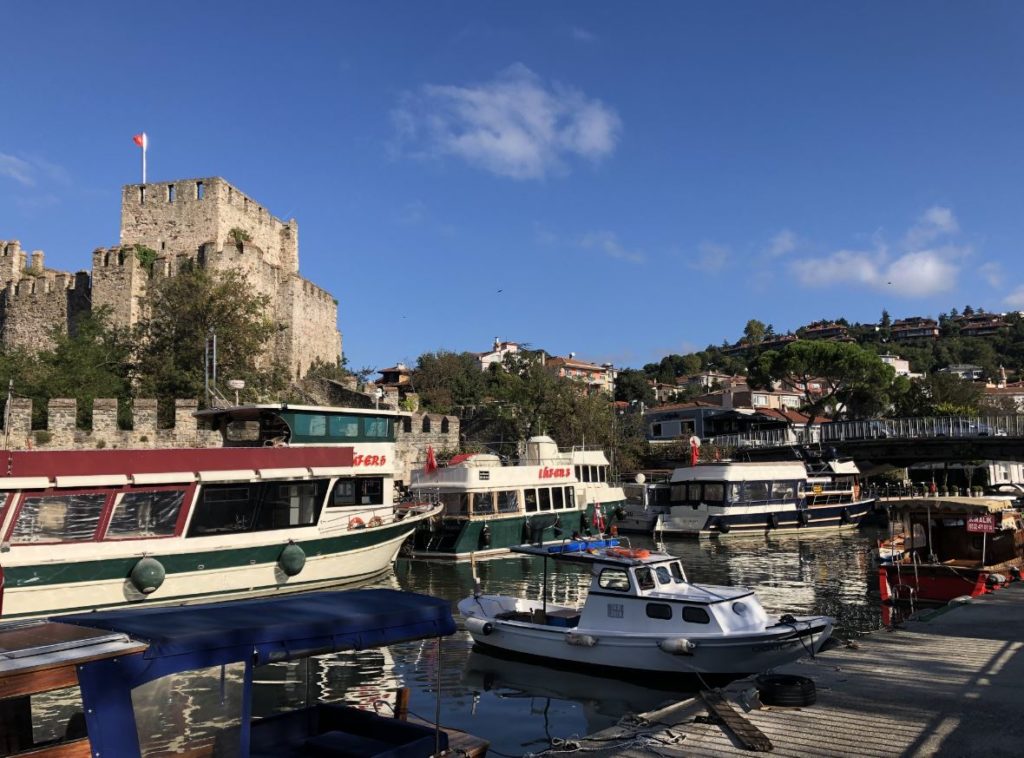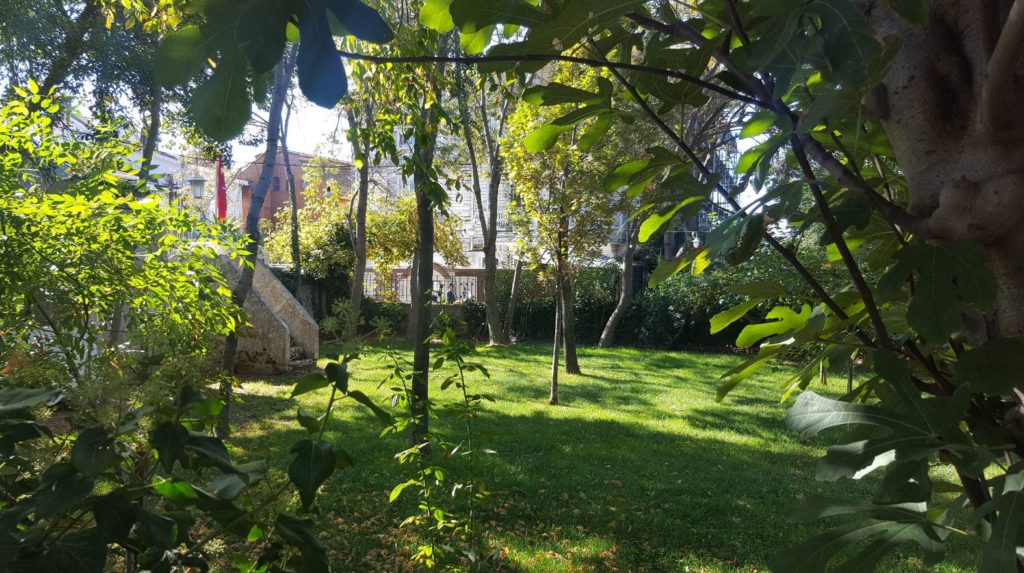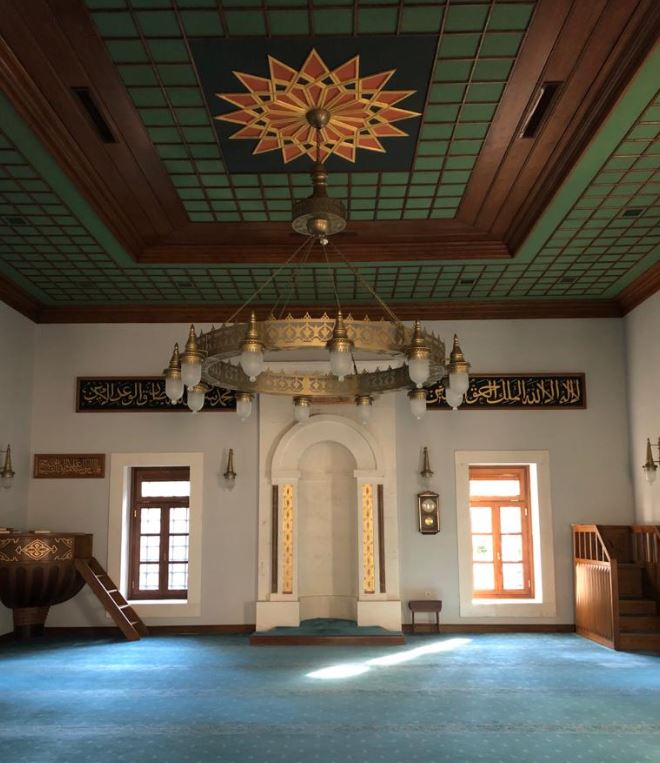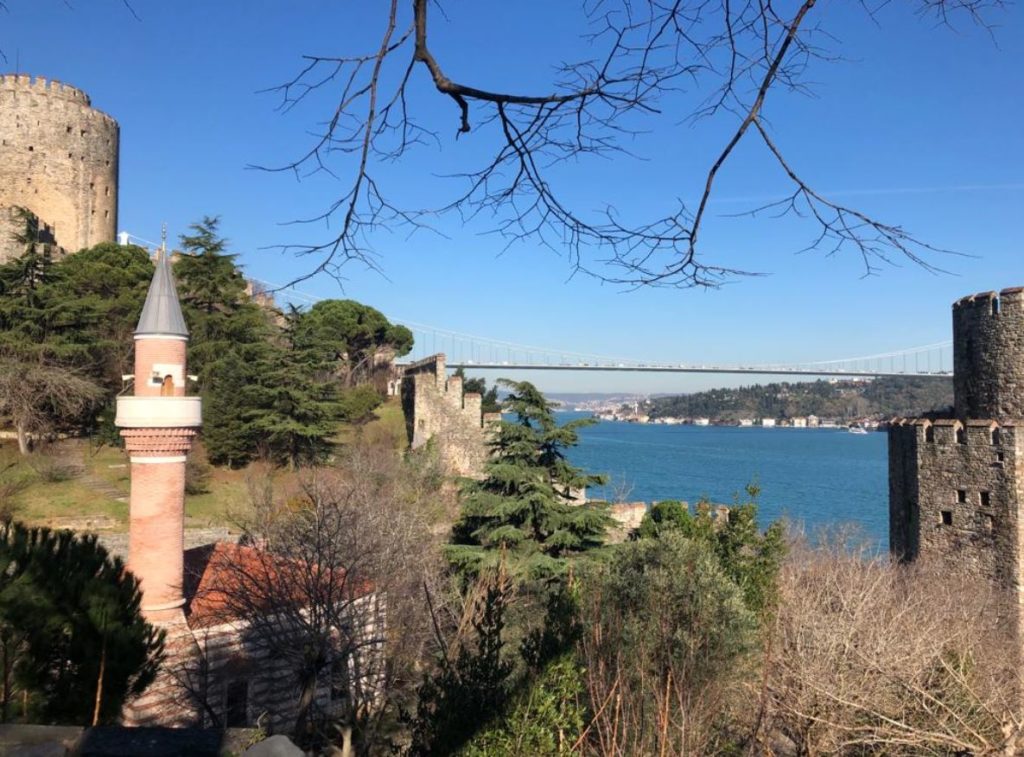Fortresses in Istanbul- Actors of the conquest
Fortresses in Istanbul
A lot of people still believe that Istanbul is the center of the world. There are a lot of competitors in the world, do you wonder what we think? Yes, we think the same 🙂 Ok, now back to the business, the conquest of Constantinople (the old name of Istanbul) was not easy. You know, it is not a flat city and divided by a sea made this city’s conquest very tough. And, these fortresses in Istanbul– Anatolian and Rumeli castles or fortresses played a major role during this conquest.
We will be using both the castle and the fortress terms in the post. They are mainly used fully interchangeable in the public, however here are the definitions of castle and fortress by Google.
The fortress is a military stronghold, especially a strongly fortified town fit for a large garrison.
The castle is a large building or group of buildings fortified against attack with thick walls, battlements, towers, and in many cases a moat.
Fortresses in Istanbul– History, and information
These castles are the major symbols of Constantinople’s conquest. And, they are looking at each other and creating a great view especially when you look from the other side. Rumeli fortress is more majestic compared to the one on the Anatolian side.
Moreover, it is good to know that the districts were named as the castles’ names. The fortresses have been constructed to the shortest distance of the Bosphorus and protected Istanbul very well. Additionally, streams are very tough around these narrowest points, so that the naval should have passed the strait very close to the fortresses which made their function easier.
Rumeli Hisari
Rumeli Hisari is also known as Rumelian Castle or Bogazkesen Castle (means Strait (or throat)-cutter castle). Yenice Hisar, Yeni Hisar, Yeni Kale are the other names that mean “New Castle”. The objective to construct this major structure was to cut the possible military or logistical support to Byzantines.
Rumeli Hisari has been constructed in 1452. The main three towers were constructed under the control of different Viziers- Halil Pasha, Zaganos Pasha, and Saruca Pasha. These viziers all played a major role for the Ottomans, and all of them had different stories. Additionally, Mehmed the Conqueror had followed the construction very closely on the site. Moreover, it is only completed in 4 months with thousands of workers and the area of the fortress is 30,000 square meters. As expected, this is an important strategical location.

Moreover, the fortress has a couple of entrances from different sides, but you can only enter from the main entrance now. It was built as a complex where you can see also a masjid (small mosque). Rumeli Hisari has been repaired several times by the Ottomans and Turkey. It is currently a museum open to the public.
In the beginning, you will be seeing different types of cannons in the garden which date back to the Ottoman period.

Towers
Halil Pasha Tower is also known as the flag tower. It is not cylindrical and has twelve corners. The thickness of the wall is 6-6.5 meters. This tower has a basement and a couple of pots are on the ground.

Zaganos (or Zagnos) Pasha Tower is the tower which is on the left-hand side. The length is 28 meters and the wall thickness is 5-7 meters.

Saruca Pasha Tower is the tower which is on the northern side of the fortress. It has seven stories and the structure has a dome.

Anadolu Hisari
Anadolu Hisari (Anatolian Castle or Anatolian fortress) ordered by Yildirim Bayezid in 1395. This was constructed as a castle and walls have been added by the order of Mehmed the Conqueror. Anadolu Hisari is also called as Guzelce Hisar. It was constructed on an area of 7,000 square meters.

It is good to know that the conquest of Constantinople has been tried a couple of times before the successful one.
Unfortunately, the castle is not in good shape and is currently divided by a street. So, it doesn’t seem glorious like the Rumeli fortress.
It can still be thought that the fortresses in Istanbul were like a facility in the old times. So, it may be hard to explore and, you should be careful when you walk around and try to find it. For instance, Anatolian Fortress has an open-air prayer place around it. This is a place surrounded by walls, including an altar on the kiblah wall and a pulpit. Beykoz Municipality restored the place in 1986 and you can see that it is very clean.

After the conquest, it served as a customs house and military prison.
Are these fortresses in Istanbul worth visiting?
To be honest, we more like Rumeli Hisari than Anadolu Hisari. But, your timing and your route in Istanbul is the first parameter here.
We think that Rumeli Hisari is worth visiting due to the splendid view over the sea and Bosphorus and seashore are more appropriate for walking. However, the cafes around Anadolu Hisari are better for relaxing and less crowded compared to cafes around Rumeli Hisari.
Since you can’t directly visit the Anatolian Fortress and climb to the walls, you can just check the walls divided by the road and an open-air praying place. If you must select one of them, pick Rumeli Fortress 🙂
Where are these fortresses located in Istanbul?
Anatolian fortress address: Anadolu Hisari, Korfez Cad., 34810 Beykoz/Istanbul
Rumeli fortress address: Rumeli Hisari, Yahya Kemal Cad., 34470 Sarıyer/Istanbul
Fortresses in Istanbul– How much time?
It is easy to check the Anatolian fortress since you can’t enter. It would take 15-30 minutes including the open-air praying place. To visit Rumeli Hisari completely would take a total of 1-2 hours including enjoying the fantastic view.
However, don’t run away after visiting these historical places. We suggest you spend a half-day in these districts combining with a meal, especially Turkish breakfast.
Fortresses in Istanbul– Dress code
There is no specific dress code for the castles. Consider the items below.
- There is a modest mosque in the Rumeli Fortress. We don’t think you should check inside, but if you want to check it, consider the following. It is for sure nobody will check your dress. However, it would be good to be respectful to other people inside the mosque who are praying. For women, please cover your head and your upper body shouldn’t be exposed. Your lower body till the knee cap should be covered as well. During praying times, it is not recommended to check the inside. For this reason, you should wait till the end of the praying times.
- If you go there during wintertime, have a thick coat or jacket. During spring and fall have a thin sweater to protect yourself, it may be windy.
- Don’t go there with sandals, flip-flops or high-heeled shoes. Or don’t try to go to the upper tower having high stairs.

Ticket prices & opening-closing hours
There is no fee for the Anatolian castle.
Museum Pass (for non-Turkish) and Museum Card (for Turkish) are valid for the Rumeli Castle. Check this post to find out more. If you don’t have the pass, the entrance fee is 40 Turkish Lira.
There is no specific definition of the timing for the Anatolian Fortress since you can only check the walls and you can’t visit the inside.
Rumeli Fortress is closed on Mondays (it was Wednesdays before the recent change). Check the hours below. There are two different times for the winter and summer seasons.
Winter Season: October -April
During this season, it can be visited between 9 a.m to 4 p.m
Summer Season: April- October
During this season, it can be visited between 9 a.m to 6 p.m
How to reach the fortresses?
Anatolian fortress
Kadikoy: 14M, 14R, and 15F can be good options. Or, you can first try to come to Uskudar, and then try to go to Anadoluhisari.
Besiktas- Dolmabahce Palace: You can first reach Uskudar by ferries and follow the step below.
Uskudar: 15, 15E, 15P and 15SN can be good options.
There are also some ferries from Kucuksu and Anadoluhisari Piers. You can try these lines to go to Istinye and Besiktas. But, they are very rare.
Rumeli fortress
There is no close metro station around the fortress. However, you can always consider the Bogazici University Metro Station which is 1.5 kilometers away and 15 minutes by walking.
Hagia Sophia, Sultanahmet Square, Blue Mosque, Basilica Cistern or Topkapi Palace: You can use T1 till Laleli and transfer to M2 and go to Levent and then go to Bogazici University Metro station by M6. And then you can walk for 15 minutes. Another option is you can go to Kabatas station by T1 and then go there by 42T, 25E, and 40T. There are some other combinations, however, it would be challenging.
You can also go there by taxi since it is not really far away.
Taksim Square: M2 and M6 combination is a good option to come to Bogazici University Metro Station and then walk around 15 minutes.
Galata Tower: M2 and M6 combination is good. You can start at the Sishane metro station. Another option is you can come to Besiktas or Kabatas to use the bus options. A taxi is also a good option from the tower to the castle.
Besiktas- Dolmabahce Palace: You can go to Kabatas station by T1 and then go there by 42T, 25E and 40T. The taxi option is also good.
Kadikoy: You can directly come to Besiktas and then go to the Rumeli castle by 22RE and 40T.
Fortresses in Istanbul- the FAQs
What does Rumeli mean?
Rumeli means south of the Balkans in the Ottoman period after the 15th century. And, it also means the country of Rome (the lands of Byzantines).
What is the best time to visit?
The winter period would not be a very good time to visit the fortresses. Especially, walking in the Rumeli fortress is not very easy and the road going up is slippery.
The best time to visit the fortress is definitely spring and fall. We wouldn’t prefer to go there in the summertime since it can be a sweaty experience.
Also, you can check the generic best time to visit Istanbul info here.
Why are these fortresses important?
As we mentioned, these fortresses are important, because they made Constantinople’s conquest possible.
Is there any other castle in Istanbul?
There are many castles in Istanbul except for these two castles. However, the most popular one is Yedikule Fortress which means Fortress of Seven Towers or Dungeons of Seven Towers except the ones in this post.
Is an English tour available?
Unfortunately, there is no English tour for these fortresses. So, be careful about every label and read them in the Rumeli fortress. Especially at the entrance, there is an intensive description.
What to do after the Anatolian and Rumeli Fortresses’ tour?
We love to spend time in these districts. You know there are a lot of things to do.
- After or before checking the Anatolian fortress, you can enjoy a yummy Turkish breakfast at Big Chef’s and enjoy the Goksu river and Rumeli fortress view. And, don’t forget to check Kucuksu Pavilion where you can spend 1-2 hours max. There is a big promenade where you can relax and enjoy the sea view. There is a big park just opposite the pavilion where you can relax. Besides, there is a historical mosque just opposite of the pavilion and this is Mihrisah Valide Sultan Mosque but it is pretty modest. We think that it is not necessary to check inside of the mosque, but check the dress code we mentioned earlier to be able to enter the mosque. We would recommend a half-day in this district.
- When you go to Rumeli fortress, start with a Turkish breakfast at Kale Cafe Restaurant. After checking the fortress, walk till Bebek on the seashore. And, this is very relaxing. But, watch out for fishing rods, fishermen are everywhere. One more thing, Bebek is one of the most luxurious districts. There are not many things to do, however, you can enjoy a coffee in one of the shops and keep on your tour in Istanbul.

Toilets and Baby Stroller, Buggy and Wheelchair
Considering Rumeli fortress, the toilets are at the entrance and they are not bad. It is almost impossible to have fun with a baby stroller, buggy, and wheelchair. Even you may not be able to go to the towers on the top.
Visiting tips
- It is prohibited to climb the towers and bastions
- Be early there and start with a Turkish breakfast. This is our best practice. Also, don’t miss drinking and eating delicious Turkish delight and Turkish coffee.
- Spend half-day in these districts.
- Be careful about your dress. Especially, visiting Rumeli Hisari can be challenging if you wear something inappropriate.
- Enjoy the bridge view in Rumeli Hisari. This can be one of the highest points in Istanbul which is close to the bridge.
- By the way, you know a lot of people visit Istanbul and most of them enjoy the Bosphorus tour. Those ships get very closer to the castles, you can prefer them at least to take some photos. However, don’t forget this is just the big picture of Istanbul, so we definitely recommend you to feel this city.

Conclusion
Here are the oldest neighborhoods of the fantastic city- Istanbul. You know, these are the beginning spots of Constantinople’s conquest. Anadolu Hisari is older, it was a simple building once upon a time and Mehmed the Conqueror ordered the walls around the castle.
Rumeli Fortress is pretty big and it is unbelievable how it was constructed in a short while. Besides its history, the view over Istanbul is simply amazing.
Moreover, you will be enjoying both the city life around these castles and breathing old Istanbul. Definitely consider these attractions when you are in Istanbul. If you must select one of them, you know what to do 🙂